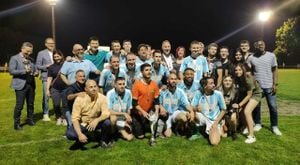Personal experiences and recovery from ACL injuries highlight the challenges athletes face both mentally and physically. Dr. Julia Iafrate, DO, who practiced sports medicine and physical rehabilitation, shared her own story as she transitioned from competitive skiing to treating athletes after her own knee injuries.
Julia began skiing at just six years old, showing early promise as she grew up racing in Canada. Yet, at the age of eighteen, she tore her ACL—an injury common among female athletes. "I had two more back-to-back knee injuries requiring surgery, which ended my competitive ski career and led me to pursue medicine," Julia explained. Now as one of the doctors treating the US Ski Team, she often sees discussions about the impact of hormones on sports injuries, particularly concerning women.
Research shows women are twice as likely to suffer ACL injuries compared to men, with some studies citing the risk as high as eight times. The reasons range from anatomical differences, such as wider hips, to lesser neuromuscular control typically seen among many female athletes. "Women tend toward sports like figure skating or dancing, where strength isn't the priority. Much of this can lead to less stability compared to male athletes who focus on strength-building sports," Julia noted.
Interestingly, hormones play another role. Some studies suggest women might be at greater risk of ACL injuries during ovulation when estrogen levels peak, leading to ligaments becoming less stiff. "We would never blame ACL injuries purely on hormones, but factors like increased estrogen, fatigue, and muscle control can certainly increase risk. Even for men, higher testosterone levels can lead to more competitive behavior, which may also create risk factors for injuries," Julia elaborated.
To prevent such injuries, Julia emphasizes the significance of strength training and stability. "It's key to maintain both flexibility and stability, as strong muscles provide the support ligaments need. Exercises like squats and leg presses are effective because they engage multiple muscle groups, which is beneficial for skiers who often face sudden challenges on the slopes," she advised.
One inspiring story of resilience is from high school football player Trey Williams, who faced his own ACL injury during his senior season. Despite the physical and emotional toll, Trey didn’t let the injury define him. "It was pretty tough. After I tore it, I was really down, and depressed. I didn’t want to do anything," he admitted, reflecting on the mental strain athletes often endure after such injuries.
Nevertheless, Trey turned things around with determination, noting, "When they finally told me I could play on it; I went to physical therapy, got back right, and just went and balled out." His impressive return to the field showed his character and loyalty to his team, earning him admiration from coaches and teammates. MacArthur Head Coach Brett Manning acknowledged, "It says a lot about his character. I’m really proud of him for the work he put in after his injury."
Trey's commitment and hard work led his team to another playoff berth. Highlighting his effort, he said, "I put in the time, I put in the work. Off-season, I went to the field so many times and just practiced." His perseverance, even with injury limitations, has not gone unnoticed by future prospects at UCO.
Coach Manning expressed confidence about Trey's future, calling him "a steal" for UCO as he undergoes rehab. "He’s going to come back stronger, and they’re getting a heck of a player," he praised.
The shared experiences of Julia and Trey remind us of the complex nature of athletic injuries, particularly ACL tears. They not only involve physiological challenges but also significant psychological resilience. Being proactive about strength training, minimizing fatigue, and recognizing how bodily changes can affect performance are all integral to avoiding injuries.
Understanding personal experiences, whether through recovery narratives from athletes like Trey or professional insights from experts like Julia, is fundamental for all athletes, especially women, who are at heightened risk for injuries. "Listening to your body and acknowledging any changes brought forth by hormonal fluctuations, injury, or even life changes like pregnancy can prevent injuries," Julia concluded. This prevention approach is increasingly becoming recognized as more effective than recovery attempts after the fact.



